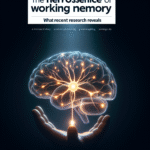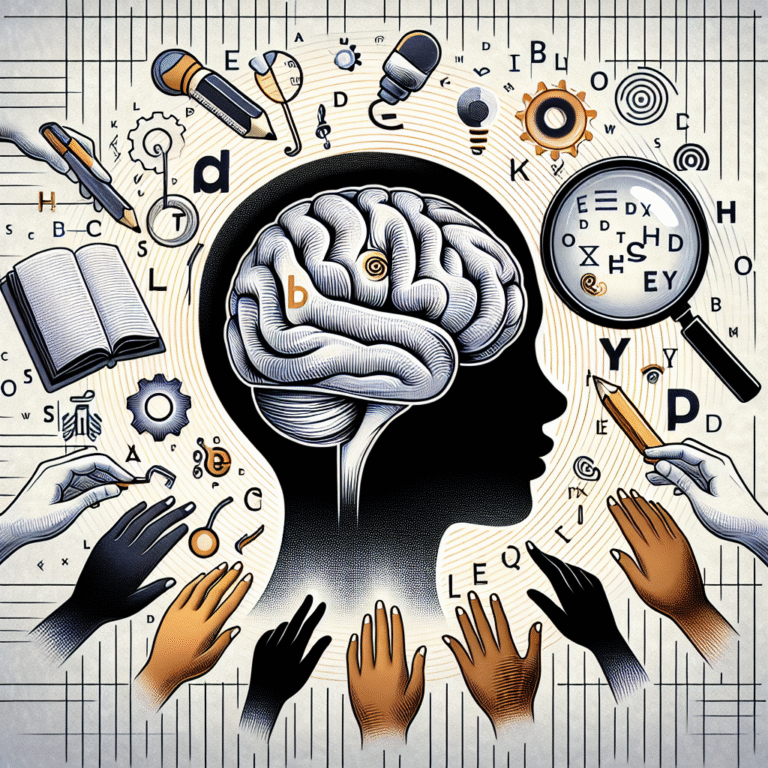Navigating Learning Differences: An Essential Guide to Assistive Tools for Students with Learning Disabilities
Introduction
In today’s educational landscape, the phrase "one size fits all" is increasingly being recognized as outdated. With the diversity of learning styles and challenges that students face, understanding and addressing these differences is more critical than ever. For students with learning disabilities, the right assistive tools can make a monumental difference in their academic journey. This comprehensive guide, Navigating Learning Differences: A Guide to Assistive Tools for Students with Learning Disabilities, seeks to explore these tools, providing insights, case studies, and practical advice to help educators, parents, and students succeed.
Understanding Learning Disabilities
What Are Learning Disabilities?
Learning disabilities (LD) are neurologically-based processing problems that can interfere with learning basic skills such as reading, writing, or math. According to the National Center for Learning Disabilities, approximately 1 in 5 students has a learning difference. Some common types of learning disabilities include:
- Dyslexia: Affects reading, spelling, and writing.
- Dysgraphia: Impacts writing abilities, affecting handwriting, spelling, and organizing ideas.
- Dyscalculia: Involves difficulty in understanding math concepts, numbers, and operations.
- Auditory and Visual Processing Disorders: Affect how information is processed, making it hard for students to understand or remember what they read or hear.
The Importance of Early Intervention
Timely intervention can significantly improve outcomes for students with learning disabilities. Early identification allows educators and parents to deploy assistive tools effectively, fostering a supportive learning environment.
Navigating Learning Differences: A Guide to Assistive Tools
When discussing tools that assist students with learning disabilities, we categorize them into three main types: technology-based tools, organizational aids, and alternative learning resources.
1. Technology-Based Tools
a. Text-to-Speech Software
Text-to-speech (TTS) software converts written text into spoken words, making it an invaluable resource for dyslexic students. Programs like Kurzweil 3000 and Read&Write allow students to absorb content aurally, enhancing comprehension.
Case Study: The Impact of TTS in a Classroom
In a middle school setting, a student with dyslexia struggled with standard reading curricula. After implementing TTS software, their reading comprehension scores improved by 40% over a semester, showcasing the tool’s ability to bridge learning gaps.
b. Speech-to-Text Tools
Speech-to-text tools can greatly assist students who have difficulties writing. Software like Dragon NaturallySpeaking and Google Docs Voice Typing allows students to express ideas without being hindered by handwriting difficulties.
Analysis
By eliminating the physical struggle of writing, these tools empower students to articulate their thoughts freely, thus enhancing their engagement and confidence in classroom discussions.
c. Learning Management Systems (LMS)
LMS platforms like Canvas and Moodle provide tailored resources and help manage learning activities, making it easier for students to track progress and deadlines.
2. Organizational Aids
a. Graphic Organizers
Graphic organizers are visual tools that help students arrange information and ideas. Templates for mind maps, Venn diagrams, and flowcharts encourage students to categorize and relate concepts, aiding comprehension and retention.
Case Study: Graphic Organizers in Action
A high school student with ADHD used graphic organizers to prepare for an upcoming history exam. By visually structuring her notes, she reported feeling more organized and was able to improve her test score by 30%.
b. Planners and Calendars
For students who struggle with executive functioning skills, planners and digital calendars are crucial. These tools promote time management and organization, helping students keep track of assignments and deadlines.
3. Alternative Learning Resources
a. Audiobooks
Audiobooks provide an engaging alternative to traditional reading, allowing students to consume literature without the physical strain of reading text. Platforms like Audible and Learning Ally make a vast range of materials accessible.
Case Study: Audiobooks in a Literacy Program
In a literacy program focused on struggling readers, participants who utilized audiobooks showed a boost in vocabulary comprehension, indicating how auditory learning can complement visual methods.
4. Professional Support and Services
a. Special Education Services
Qualified special education teachers can offer personalized support tailored to an individual student’s needs. Collaborating with these professionals ensures that assistive tools are implemented effectively within the broader educational framework.
b. Therapy Options
Occupational therapy and speech-language pathology can address specific learning challenges. Students receiving tailored support frequently show improved academic outcomes and self-esteem.
Designing Inclusive Learning Environments
Creating Supportive Classrooms
Inclusive education environments do more than just accommodate; they celebrate diverse learning differences. Strategies include:
- Differentiated instruction
- Cooperative learning groups
- Flexible seating arrangements
Research Insight
Educational institutions that adopt inclusive practices report greater student satisfaction and lower dropout rates, underscoring the effectiveness of supportive environments.
Conclusion
The journey of Navigating Learning Differences: A Guide to Assistive Tools for Students with Learning Disabilities highlights the power of embracing differences within the classroom. When equipped with the right tools, students can overcome challenges, thrive academically, and feel empowered in their learning journeys.
Actionable Takeaway
Empower yourself with knowledge about these tools, advocate for the needs of students with learning disabilities, and make conscious efforts to incorporate assistive technologies in yours or others’ learning environments.
FAQs
1. What are common signs of learning disabilities in students?
Common signs include difficulty reading or writing, trouble following instructions, and poor organizational skills.
2. How can parents support students with learning disabilities?
Parents can advocate for their child’s needs, provide emotional support, and collaborate with educators to ensure access to appropriate resources.
3. Are assistive technologies expensive?
While some tools can be costly, many free and low-cost options are available. Schools often provide access to these resources at no charge.
4. How effective are assistive tools?
Research suggests that when implemented correctly, assistive tools can significantly enhance learning outcomes and engagement for students with learning disabilities.
5. Where can I find more resources related to learning disabilities?
Many organizations, such as the Learning Disabilities Association of America (LDA), offer valuable resources and information on learning disabilities and assistive tools.
By incorporating the insights presented in this guide, readers can better support students with learning disabilities and create more inclusive and effective educational experiences.
















